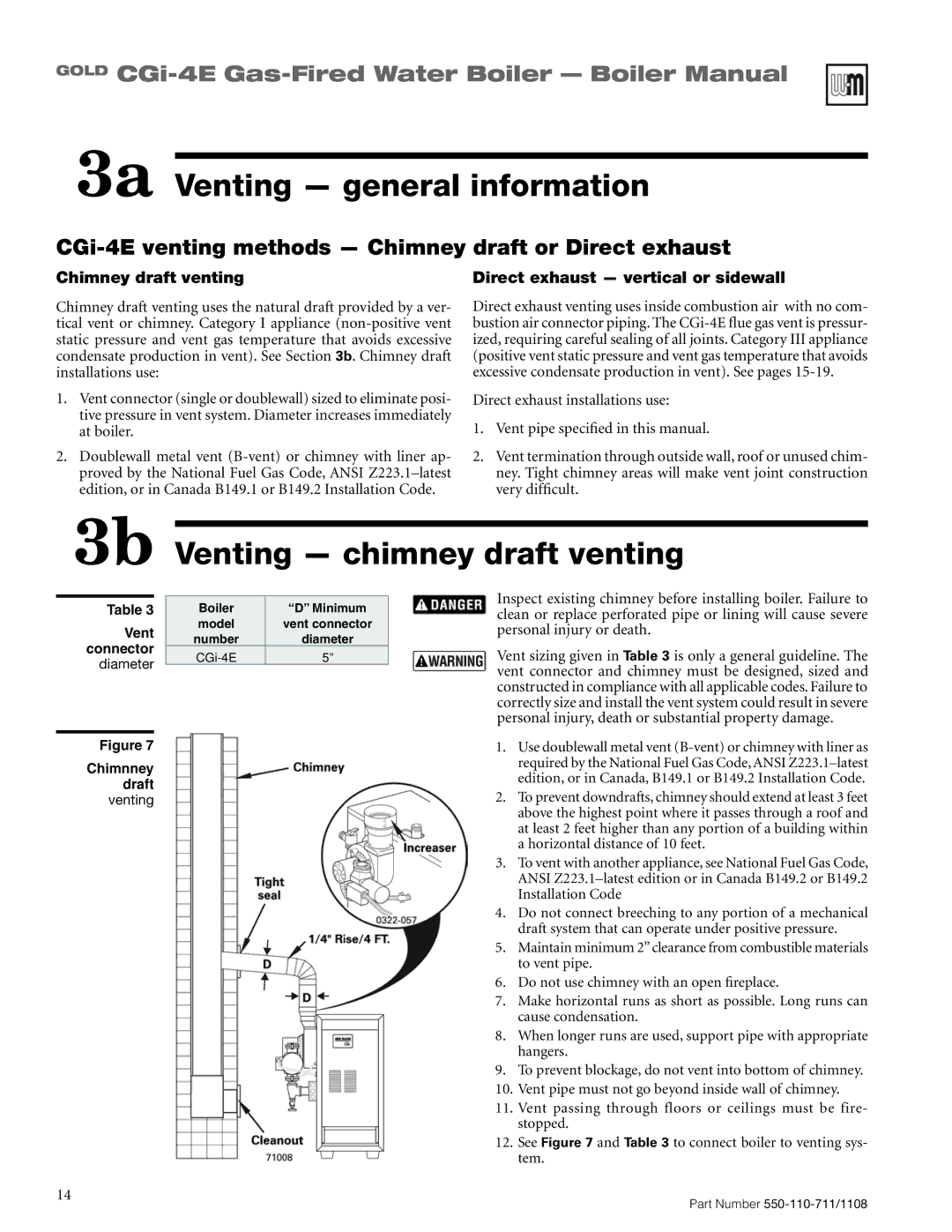CGI-4E specifications
The Weil-McLain CGI-4E is a standout in the realm of commercial boilers, designed to meet the rigorous demands of a variety of heating applications. This gas-fired cast iron boiler exemplifies durability, efficiency, and performance, making it a popular choice in various commercial settings, including schools, hospitals, and office buildings.One of the main features of the CGI-4E is its cast iron construction. Cast iron has long been favored for its excellent heat retention and distribution capabilities, leading to improved overall efficiency. The boiler is designed to maximize heat output while minimizing energy consumption. This characteristic is especially beneficial for businesses seeking to lower their energy costs without sacrificing comfort.
In terms of efficiency, the Weil-McLain CGI-4E boasts an impressive thermal efficiency rating. Its design incorporates advanced technology, allowing it to achieve an AFUE rating of up to 84%. This efficiency is achieved through features such as a full-modulating burner and a unique heat exchanger design that allows for optimal heat transfer and reduced flue gas temperatures.
The CGI-4E is also remarkable for its versatility. It is offered in a variety of sizes, making it suitable for different heating loads. This flexibility allows for installation in a wide range of environments, adapting easily to both existing and new heating systems. Additionally, the boiler comes with multiple venting options, including direct vent and conventional venting, further enhancing its installation flexibility.
Another standout feature is the integrated boiler control system, which simplifies operation and monitoring. This control system optimizes burner performance and enhances safety features, including automatic shut-off in case of system anomalies. The advanced controls also allow for easy integration with building management systems, enabling better energy management and reduced operational costs.
The CGI-4E also emphasizes ease of maintenance, with service-friendly designs that allow technicians to access components without difficulty. This consideration translates to reduced downtime and lower maintenance costs, ensuring that the boiler operates efficiently over its lifetime.
Overall, the Weil-McLain CGI-4E blends reliability, efficiency, and advanced technology, making it a premier choice for commercial heating needs. Its cast iron construction, impressive efficiency ratings, versatile installation options, and user-friendly controls solidify its reputation as a leading boiler solution in the industry.

